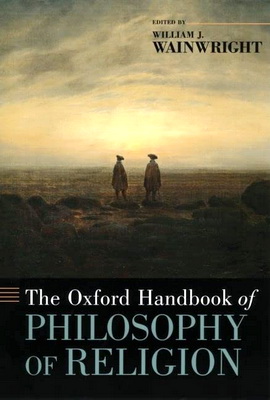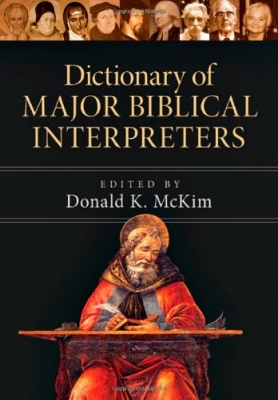
The Oxford Encyclopedia of the Bible and Theology - модуль BibleQuote
The Oxford Encyclopedia of the Bible and Theology
Edited by: Samuel E. Balentine. - Over 160 entries. – Oxford: Oxford University Press, 2015. – 1200 p.
Print ISBN-13: 9780199858699
eISBN: 9780199858705
Exploration of the Bible’s theology is an ever-changing endeavor. While some issues are clearly rooted in the Bible’s historical context like theological perspectives on the creation of the world, covenant, sin, sacrifice and atonement, grace and forgiveness, other issues are rooted in the modern world, where both the secular and religious raise questions biblical authors may not have anticipated. For example, biblical perspectives may critically inform contemporary concerns about market economics, global climate change, wealth and poverty, and gender/race discrimination. The Oxford Encyclopedia of the Bible and Theology situates itself inside this tension, classically defined as the intersection between what the Bible meant and what it means, with the objective of providing a resource for constructive theological reflection in the market place of public discourse.
* * *
This encyclopedia is one in a series dealing with the Bible and related topics, including art, archaeology, ethics, gender studies, and law. The scope of these topics is a clear indicator of the Bible’s influence on virtually all aspects of ancient and modern cultures. The inclusion of The Oxford Encyclopedia of the Bible and Theology (OEBT) in this series signifies that a primary reason for the Bible’s iconic status is its witness to inaugural and enduring understandings about God, the world, and humankind. In short, the Bible impacts so many areas of life precisely because it is a seedbed for theological reflection. From ancient authors to contemporary readers, both religious and irreligious, the quest to understand what makes life worth living has long intersected with studying the biblical repository of words (logoi) to, from, and about God (theos).
No encyclopedia can claim to be exhaustive or complete, despite the conceit of its name. This is certainly true of OEBT. While the table of contents is arranged alphabetically, it does not include many topics that could justifiably claim space in an A-to-Z compilation. In fact, we editors decided early on that rather than increasing the number of entries, we would instead be more economical by combining thematically related topics in a single article. Readers will find subjects that might be treated separately joined together in one entry by a strategically placed conjunction, e.g., “Blessings and Curses,” “Freedom and Slavery,” “Justice, Justification, and Righteousness.” We trust that this not only makes OEBT a bit more user friendly but may also facilitate a thicker, and therefore richer, analysis. The topical outline of contents is only “a general overview of the conceptual scheme”; nevertheless, it indicates something of the diversity of the biblical material. It is not only biblical books (e.g., Isaiah and Matthew) and biblical themes (e.g., grace, hope, and love) that contain theological kernels. Biblical figures (e.g., Mary and Moses), biblical places (e.g., Eden and Jerusalem), and other issues ranging from the economic (e.g., labor and wealth and poverty) to the political (e.g., politics and systems of governance) are also part of the Bible’s theological nexus.
* * *
Flesh
The cultures populating the lands surrounding the Mediterranean Sea shared, for the most part, a semantic range for the vocabulary glossed by the English word “flesh.” That vocabulary referred, on the one hand, to one component of animal and human anatomy but, on the other hand, could also serve, by way of metonymy, for the entire human person. These cultures also used this vocabulary to distinguish human beings from the divine. They differed in details and in whether to attribute a role to the flesh in stimulating inappropriate emotions and behavior.
Greek Literature.
“Flesh” (primarily sarx, occasionally kreas) can refer to parts of fruits (e.g., Theophrastus, Caus. plant. 1.10) and trees (e.g., Aristotle, [Plant.] 1.4). More frequently it refers to a component of animal and human anatomy distinguishable, for example, from hair, skin, sinew, and blood (e.g., Euripides, Hec. 1072; Plato, Phaedr. 98c–d; Aristotle Hist. an. 3). Aristotle identifies it as the layer between the skin and bone (Hist. an. 3, 16, 26). This part of the animal anatomy can be consumed; because much meat that was eaten came from sacrifices, that context is frequently in view (e.g., Od. 9.293; when referring to flesh that is eaten, kreas is the more frequent term but the term in this example is sarx). The meaning can expand from identifying a portion of the body to referring to the whole body (e.g., Aeschylus, Ag. 72; Euripides, Hipp. 1031).
Flesh is impermanent. In Euripides’s Medea, the flesh burns and separates from the bone (1200); after death, flesh and bones disappear (Od. 11, 219–222). The flesh of human beings distinguishes them from the gods. For Plato, divine beauty is free of any taint of human flesh (Symp. 211e). According to Epictetus, the gods are not flesh but intelligence, knowledge, and right reason (Diatr. 2, 8, 2).
In the moral philosophical literature, flesh becomes a subtopic in a larger discussion about the role of the body in moral formation. Some writers assigned to the flesh the processing of sensory input. In Aristotle, the flesh is a location where sensation takes place (Part. an. 2.1, 20; 8, 24; Gen. an. 2, 5, 10). In Epicurus, flesh experiences both pleasure and pain (Vatican Sayings, 33; cf. KD 3, 4). From the time of Plato, though, the desires of the body were often considered a source of problems for the soul (cf. Phaedr. 81b, Leg. 8.835c). He argued, for example, that the flesh of a person who is buried is not the real person (Leg. 959c). Plutarch, an heir to Plato, describes the emotions as growing out of the flesh (Virt. mor. 451A). In Greek literature, human beings consist of flesh but, at least in some forms of philosophical thought, are not essentially flesh.
Hebrew Bible.
The Hebrew vocabulary translated by the English word “flesh” occurs approximately 286 times in the Hebrew Bible. Most of these occurrences (270) translate the term bāśār ; a few instances (16) translate the term šĕʾēr. The spectrum of usage in the Hebrew Bible is similar to what one finds in Greek literature.
The term can indicate portions of animal (including human) anatomy. It refers to animal (Isa 31:3) or human flesh as distinct from bone and sinew. God closes up the place from which he takes the rib with flesh (Gen 2:21); in Ezekiel 37:6 the prophet describes resuscitating the bones with sinews, then flesh, skin, and breath (cf. Job 10:11). Flesh can be a euphemism for either male (Exod 28:42; Lev 15:2) or female (Lev 15:19) genitalia. Humans consume flesh (Gen 9:4; cf. Exod 12:8; Num 11:33), but Israelites should avoid unclean flesh (Lev 7:19; Deut 14:8) and blood (Gen 9:4; Lev 3:17).
Flesh can refer to the whole body: for example, Ahab puts sackcloth on his flesh (1 Kgs 21:27). The expression “all flesh” indicates either animals (Gen 6:19; 8:17), human beings (Isa 40:5; Num 16:22; 27:16), or all embodied creatures (Gen 7:21; Num 18:15). In certain contexts, flesh indicates close human relationships: the woman is “flesh of my flesh” in Genesis 2:23, and the man and the woman are “one flesh” in 2:24. In Genesis 37:27 a brother is “our own flesh” (cf. Judg 9:2; 2 Sam 5:1; 1 Chr 11:1).
Flesh indicates what is impermanent about human beings. Flesh fails or wastes away (Ps 73:26; Lam 3:4); flesh is like grass that withers and fades (Isa 40:6); flesh is like a wind that passes and does not return (Ps 78:39).
Flesh distinguishes human beings from God. Flesh is never attributed to God in the Hebrew Bible, and Job explicitly raises the issue, questioning whether God can understand his suffering because he does not have “eyes of flesh” (Job 10:4).
Unlike in some Greek literature, flesh is not the locus or cause of inappropriate desires. In Genesis 6:12, all flesh is described as violent but violence does not appear to derive from, or be nurtured by, the flesh.
Second Temple Judaism.
Second Temple Judaism continues to employ “flesh” along the spectrum seen in Greek literature and in the Hebrew Bible. Flesh constitutes a part of the human anatomy (Philo, Ebr. 87) distinct from other skin and muscle (Philo, Flacc. 71). Flesh indicates impermanence: it wastes away (Sir 31.1) and is corruptible (Philo, Gig. 45); it is mortal (Sib. Or. 1.1, Pss. Sol. 16:14). In the Greek version of 1 Enoch 17:6, Hades is the place where no flesh goes—the human being sets flesh aside at death. But one also sees some variation in this literature: 4 Baruch seems to suggest the resurrection of the flesh (4 Bar. 6:6).
Certain themes get developed in the literature from the Second Temple period. Flesh belongs to life on earth (T. Job 38) in contrast to spiritual beings, such as angels (Apoc. Ab. 19) or Satan (T. Job 27). These two realms are kept distinct. In Jubilees, the heavens are created first and then the spiritual beings (Jub. 2:2) and the places for the fleshly beings (Jub. 2:11). Flesh can handicap the human being’s ability to comprehend God: fleshly beings cannot see God (1 En. 14:21; but neither can the angels), and flesh cannot understand God (1QH 15:21).
An assessment found particularly in the Qumran literature is that flesh is inclined to disobey God. In the Thanksgiving Hymns, flesh lives in sin from the womb (1QH 4:29). In the Rule of the Community, the author claims to belong to the company of ungodly flesh (1QS 11:9). Flesh is subject to God’s anger (1 En. 84:4–6; but angels also sin). The Damascus Rule begins by announcing that God has controversy with all flesh—those who reject him (CD 1:2). One of the standards described in the War Scroll broadcasts God’s war against the flesh of evil (1QM 4:3). Flesh in and of itself does not appear to be implicated as sinful in any of these texts but is the essence of human beings who sin against God; flesh can handicap the human being, but flesh is not the source or locus of sin.
Philo, drawing on explanations developed by Plato and his heirs, introduces associations with flesh seen in the moral philosophers. Flesh is closely related to emotions and pleasures (Leg. 3.158, Gig. 35, 40); emotions grow out of the flesh in which they have their roots (Her. 268). Philo divides the world into two kinds of people: those who live by spirit and reason and those who live for the pleasures of the flesh and blood (Her. 57). The pleasures of the flesh are irrational and enslave the mind (Gig. 40, Leg. 2.49, Virt. 78). The influence of Plato is particularly seen in Philo’s description of the flesh as a burden carried around by the soul (Gig. 31, Agr. 25, Deus 2).
New Testament.
New Testament writers use “flesh” in continuity with certain usages from each of the cultures represented by the literature discussed above. Sarx occurs 147 times in the New Testament. Almost half of those occurrences are in the undisputed letters of Paul (72), with another 19 appearing in letters attributed to Paul (kreas occurs only twice, both times in reference to flesh to be eaten [Rom 14:21; 1 Cor 8:13]). Sometimes, sarx occurs in quotations from the Hebrew Bible (e.g., Mark 10:8 and parallels).
At times, flesh indicates part of animal and human anatomy: Paul lists different kinds of animal flesh including bird, fish, and human (1 Cor 15:39). Flesh can be combined with other terms to indicate one of multiple components that make up the human being: flesh and blood (Matt 16:17; cf. 1 Cor 15:50; Gal 1:6; Eph 6:12; Heb 2:14); Jesus refers to his flesh and bones in Luke as indications that he is not a spirit (Luke 24:39). Flesh can refer to the whole body (e.g., Gal 4:13; 2 Cor 7:5; Eph 5:29; 1 Pet 3:18, 21; 4:11). Paul (e.g., Rom 3:20; 1 Cor 1:29; Gal 2:16) and John (17:2), among others (e.g., Matt 24:22), use the Hebrew expression “all flesh” to refer to all of humanity. Used more narrowly, flesh can indicate human relationships: Paul talks about his kin as his flesh (Rom 9:3; 11:14; cf. 1 Cor 10:18).
Flesh is mortal or impermanent (2 Cor 4:11; Jas 5:3). It designates human frailty: according to Paul, sowing to flesh reaps corruption from the flesh (Gal 4:13; 6:8; cf. Rom 6:19; 8:3). Flesh can distinguish the human realm from the spiritual realm. That which is born of flesh is flesh but that which is born of spirit is spirit (John 3:6). One lives on the earth in flesh (Phil 1:22, 24; Heb 5:7). Flesh and blood cannot inherit the kingdom of God (1 Cor 15:50; cf. Rom 8:5), yet those resurrected will exist in some form of body (1 Cor 14:40, 44, 53–54). Christ died in the flesh but was made alive in the spirit (1 Pet 3:18; 4:6).
Life in the flesh can be a neutral reference: not many of the Corinthians are wise according to the flesh (1 Cor 1:26; cf. 2 Cor 1:17; 10:2, 4; Phil 1:22; 2:4; Phlm 16). Sometimes it is without value: the spirit gives life, the flesh is useless (John 6:63). Flesh can hinder one’s ability to understand the significance of Jesus (John 8:15; 1 Cor 3:1; 2 Cor 5:16). Thus, life in the flesh can at times be antithetic to God’s values: flesh has problematic passions and desires (Gal 5:16, 24; Eph 2:3); what the flesh desires opposes the spirit (Rom 8:7; Gal 5:13, 17; cf. Rom 7:5; 18; 13:14; 1 John 2:16; 2 Pet 2:10, 18).
The most extensive discussion involving flesh in the New Testament occurs in Romans 7–8. Paul’s discussion here is complex and appears to be influenced by Platonic traditions. The human being described lives in the flesh (Rom 7:5, 14, 18; cf. 2 Cor 10:3; Gal 2:20; Phil 1:22). Those living in the flesh cannot please God (Rom 8:8). The flesh is not good and serves sin (Rom 7:18, 25; 8:3) and ultimately leads to death (8:6). But, in Christ, even though one is in the flesh (though in 8:9 Paul tells them that they no longer are in the flesh but are now in the spirit), one does not have to live “according to the flesh”; one can live “according to the Spirit” (Rom 8:4–5, 12).
Certain writers use flesh to indicate aspects of the nature and work of Jesus. Paul claims that Jesus came in the likeness of sinful flesh (Rom 8:3). The writer of Hebrews emphasizes that Christ shared blood and flesh with human beings (Heb 2:14); he became like those he came to serve. The Johannine writings insist that the preexistent Word became flesh (John 1:14) and that confessing that Jesus came in the flesh is essential (1 John 4:2; 2 John 7). A creedal statement also appears in 1 Timothy 3:16 that affirms that Jesus came in the flesh.
Later Christian Usage and Assessment.
In post–New Testament writings, flesh remains part of the larger question of human anthropology and becomes increasingly significant in Christological arguments. Several writers insist the flesh must be kept pure and unpolluted (Ign. Phld. 7.2; Ign. Pol. 5.2; 2 Clem. 8.4). Ignatius asserts that those who belong to the flesh cannot do spiritual things (Ign. Eph. 8:2). The epistle of Diognetus claims that the flesh hates the soul because it keeps it from yielding to desires (Diogn. 6:5). In a couple of writers one sees an insistence on the resurrection of the flesh (Justin, Dial. 80.5; Theophilus, Autol. 1.7).
That Jesus came in the flesh is insisted on by several writers (Ign. Eph. 7:2; Pol. Phil 7:1; Barn. 5:6, 10–11). That he was preexistent and became flesh also appears in this literature (2 Clem. 9:1–5; Justin, Dial. 48). The elements of the Eucharist are also connected to the flesh of Jesus (Ign. Smyrn. 6:2). Furthermore, the flesh and blood of Jesus in the Eucharist nourish the flesh and blood of the recipient (Justin, 1 Apol. 66.2). Coming out of the Christological debates in the fourth century regarding the essence of the Son of God, the Nicene–Constantinopolitan Creed includes the language of becoming “flesh” to insist that the son was fully human.
In contemporary theological discussions regarding human beings, “body” tends to be the dominant term used. Discussions of transhumanism raise questions about what it means to be human, and in such conversations the place of “flesh” in understanding both anthropology and Christology will need to be addressed.
[See also Adam (Primeval History); Anthropology; Body; and Resurrection.]
Bibliography
- Boyarin, Daniel. A Radical Jew: Paul and the Politics of Identity. Berkeley: University of California Press, 1994.
- Bratsiotis, N. P. “Basar.” In Theological Dictionary of the Old Testament, edited by G. Johannes Botterweck and Helmer Ringgren, Vol. 2, pp. 317–332. Grand Rapids, Mich.: Eerdmans, 1975.
- Hefner, Philip. Technology and Human Becoming. Minneapolis: Fortress, 2003.
- Jewett, Robert. Paul’s Anthropological Terms: A Study of Their Use in Conflict Settings. Leiden, The Netherlands: Brill, 1971.
- Martin, Dale. The Corinthian Body. New Haven, Conn.: Yale University Press, 1995.
- Schweitzer, E., et al. “Sarx, Sarkikos, Sarkinos.” In Theological Dictionary of the New Testament, edited by Gerhard Friedrich, Vol. 7, pp. 98–151. Grand Rapids, Mich.: Eerdmans, 1971.
- Thiselton, A. C. “Flesh.” In New International Dictionary of New Testament Theology, edited by Colin Brown, Vol. 1, pp. 671–682. Grand Rapids, Mich.: Zondervan, 1986.
- Wasserman, Emma. Death of the Soul in Romans 7: Sin, Death, and Law in Light of Hellenistic Psychology. Tübingen, Germany: Mohr Siebeck, 2008.
- Wolff, Hans Walter. Anthropology of the Old Testament. Philadelphia: Fortress, 1974.
Richard A. Wright





Комментарии
Пока нет комментариев. Будьте первым!